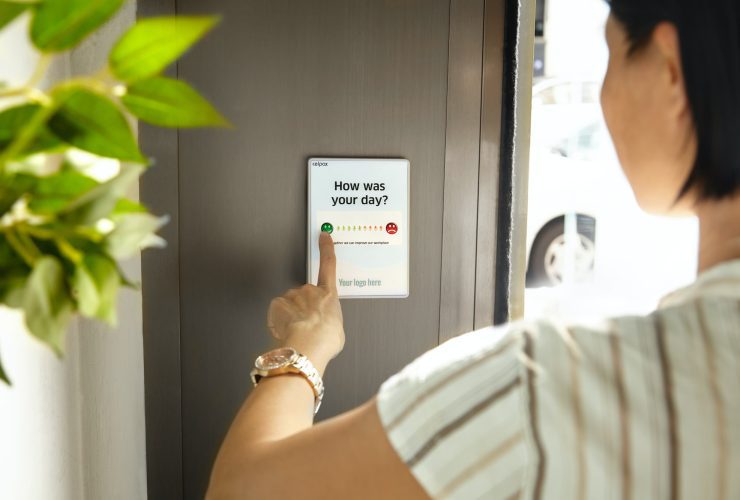Common Google Ads Mistakes, Part 4: The Post-Click Website Experience
We’ve seen how Google Ads can be an effective way to grow your practice. But the story doesn’t stop once a patient clicks on your ad. To make the most of every opportunity, you need to ensure that their post-click website experience is optimized for them to convert. So in this final episode in our series on common Google Ads mistakes, we’ll explore the most common mistakes people make with their post-click website experience.
Episode Transcript: The Post-Click Website Experience
What’s up everybody, and welcome to another episode of the Medical Marketing Podcast from Messenger – the show where we give you actionable tips and advice to help improve your practice marketing, grow your revenue, and take patient experience to the next level. I’m your host, Crawford Ifland, and today we’re going to be discussing your post-click website experience. Let’s dive in.
Mistake #1: Ineffective Calls to Action
Mistake #1? Having ineffective calls to action on your landing page.
Now, most practices know that they shouldn’t be sending PPC clicks to their homepage, but to a landing page that’s specific to the ad the user clicked on. This is fairly straightforward, but too many people forget that Calls to Action are an essential component of these landing pages.
Having ineffective CTAs – or not having a CTAs throughout your landing page – is a mistake that can diminish their effectiveness.
Here are some pointers to improve your Calls to Action:
- Use only one Call to Action per page, but include it in different places throughout your page, and with different language, too. You never want to direct users to take more than one action per page, as that will dilute your effectiveness – only have one desired action per page.
- Make sure the color of your Calls to Action contrasts with the rest of your page so that they stand out.
- Make your Call to Action focused on the user through language. Rather than saying “Get Your Free Report”, say “Get My Free Report” to get the user thinking about themselves.
These are just a few of many best practices with Calls to Action, but they can go a long way in making your landing pages more far effective.
Mistake #2: Not Focusing on Bounce Rate
Our second mistake in the post-click landing page experience is failing to focus on bounce rate.
Bounce rate is the percentage of people who enter your site and then leave (or “bounce”) rather than continuing to click around and view other pages on your site.
Now, bounce rate isn’t always bad. If a user visits your page, fills out a form to become a lead, and then exits your site, that’s a good thing – you have a new lead!
But the mistake comes when you fail to pay attention to the bounce rate. If people aren’t converting directly on your landing page but click through to other pages on your website, all is not lost – there are still opportunities to develop that relationship and get a conversion. But if people click on an ad, spend a few seconds there, and then leave, your bounce rate will be high, which means that something isn’t working.
This can happen for a few reasons. Maybe your landing page isn’t easy to use. Maybe the information on the page doesn’t match the offer in your ad. Maybe the targeting of your campaign isn’t relevant enough. Whatever the reason, bounce rate will be your first indication that something might be amiss. So if you want to have effective campaigns, make sure to pay attention to your bounce rate.
Mistake #3: Going for “Pretty” Instead of “Effective”
Our third mistake in post-click landing page experience is going for pretty landing pages instead of effective landing pages.
Now, there’s inherently nothing wrong with a pretty landing page that’s designed well and conveys the right information. In fact, you want your landing pages to look good. A landing page that isn’t pretty – or worse, is hard to use – may in fact turn potential patients away.
But there’s a temptation among many marketers to go for pretty over effective. At the end of the day, I’d go with a landing page that isn’t the prettiest but leads to new patient leads over one that’s beautifully-designed but doesn’t get any results.
Often times, there’s a way to combine form and function and have the best of both worlds.
It’s a huge mistake to let the temptations of a pretty landing page – distracting animations, large photos, and thoughtless (but aesthetically beautiful) design – sway you, when in fact they may harm conversions, which is the ultimate goal.
So when you’re designing landing pages, make sure that they’re still effective, not just pretty. You can use visitor heatmap tools like Hotjar to see how real users use your landing pages, which you can then use to inform design decisions.
Because at the end of the day, an effective landing page beats a pretty one every single time.
Recap
So, let’s recap what we’ve learned today:
- Make sure your Calls to Action are effective with personalized language, and be sure to only include one CTA on each landing page. If a user has too many options to choose from, they won’t make a choice at all. Keep things as simple as possible for your patients by only including one Call to Action.
- Keep an eye on your bounce rate. A bounce rate that’s too high – or one that suddenly increases – could point to problems on your site that could be diminishing your effectiveness.
- Go for effective landing pages over pretty. Conversions trump design every single time. Remember, it’s conversions that contribute to your bottom line, not your pretty landing pages.
If you follow these recommendations and ensure you don’t fall prey to these landing page mistakes, your campaigns should become much more effective and help you grow your practice.
Next Week…
That’s all for today’s episode of the Medical Marketing Podcast.
We’ll be taking a short break for the holiday season, but when we come back after the new year, we’ll discuss the importance of Google My Business and the “Map Pack.” We’ll look at why they matter so much to physicians in private practice for getting more local patients through local SEO.
As always, we’ll have a link to the show notes in the description, and don’t forget to browse our website at www.messenger.md – we’ve got tons of great resources on how to improve your practice marketing, grow revenue, and take your patient experience to the next level.
For Messenger, I’m Crawford Ifland – see you next week!







